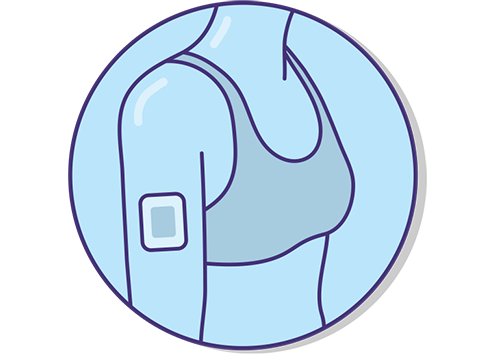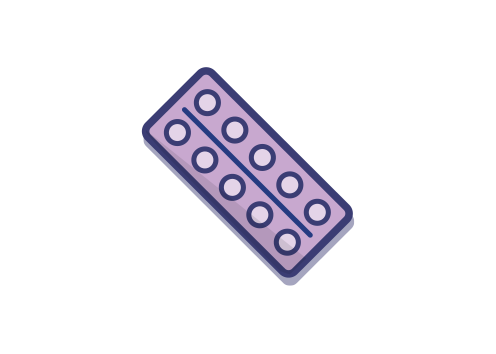
Sex should be fun and exciting but getting an infection or having an unwanted pregnancy is not.
We want to give you the facts about contraception so you can make a decision that’s right for you.
There are many different types of contraception. We have written a short description about each method below but you can find out more by clicking on the method. This will take you to a different page on our website.
You might also like to use Brook’s Contraception Toolkit – it’s a short questionnaire that works out which form of contraception is best for you and your lifestyle.
Emergency Contraception
You can use emergency contraception if:
- You have had sex and didn’t use contraception
- If the condom split or came off during sex
- If you have forgotten to take your pill
If you act quickly emergency contraception will usually prevent a pregnancy.
There are three methods of emergency contraception:
- A special pill known as emergency hormonal contraception that works within 3 days after sex (but it works better the sooner you take it)
- A different pill known as oral emergency contraception that works within 5 days after sex ( but it is best to take it as soon as possible)
- The emergency IUD (also known as the coil), which can be used up to 5 days after sex and is the most effective. After this, the IUD will protect you from pregnancy up to 5 – 10 years.
Where can I get emergency contraception from?
If you are under 25 you can get free emergency contraception pills from the following places:
You can get the emergency IUD (coil) from most young people’s sexual health clinics but you should ring first to check that a doctor or nurse trained to fit one is available.
Intrauterine system (IUS)
What is it?
It’s a plastic, t-shaped device placed into the womb that releases progestogen. It is also known as a hormone coil or Mirena.
How effective is it?
Over 99%
Advantages
- You don’t have to think about it every day
- It is a long term method that can work for up to 5 years
- It can help with heavy and/or painful periods. They become lighter and less painful – sometimes they may stop altogether but this is ok and not unhealthy
- Your fertility returns to normal once you have it removed.
Disadvantages
- Sometimes there can be irregular bleeding or spotting for the first 6 months of having an IUS
- It doesn’t protect against STIs

Interauterine Device (IUD)
What is it?
It is a small plastic and copper device put into the womb. Its also known as a copper coil.
How effective is it?
Over 99%
Advantages
- You don’t have to think about it every day
- This is a long term method. It can stay in your body for 5-10 years
- Your fertility returns to normal after it is removed
- Ideal for those who can’t or don’t want to take hormones
- It can also be used as emergency contraception up to 5 days after having unprotected sex.
Disadvantages
- It can often make periods longer, more painful and heavier
- It doesn’t protect against STIs

Implant
What is it?
The implant is a small, flexible bar inserted under the skin of the upper arm. It releases the hormone progestrogen.
It is also known as Nexplanon or the rod.
How effective is it?
Over 99%
Advantages
- Your fertility returns to normal after it is removed
- It’s a quick, easy procedure
- You can have the area numbed so you don’t feel any pain when it is put in
- You don’t have to think about it every day
- It can help with heavy periods
- This is a long term option that can work for 3 years. However it can be taken out before that.
Disadvantages
- It takes a small procedure to fit and remove it
- It doesn’t protect against STIs
- Your periods might change to become lighter or heavier

Injection
What is it?
An injection of progestogen also known as Depo-Provera
How effective is it?
Over 99%
Advantages
- This is a long term method and lasts for 8-12 weeks
- You don’t have to think about taking something every day
- It’s quick and easy
Disadvantages
- It can’t be removed from the body so side effects could continue while it works, and in some cases, for sometime afterwards
- It doesn’t protect against STIs

Vaginal ring
What is it?
The ring is small and flexible. It is inserted into your vagina and it releases two hormones – oestrogen and progestogen.
It works in the same way as the combined pill.
How effective is it?
99%
Advantages
- You only have to remember to change the patch once a week
- It’s easy to use
- Unlike the pill, the hormones do not need to be absorbed by the stomach, so the ring is not affected if you vomit or have diarrhoea
- It cant be seen
Disadvantages
- It may cause vaginal irritation in some women
- It can increase your risk of getting a blood clot in your leg
- It doesn’t protect you against STIs

Patch
What is it?
The patch is a small, thin, beige coloured patch, nearly 5cm x 5cm in size. You stick it on your skin and it releases two hormones – oestrogen and progestogen.
It works in the same way as the combined pill.
How effective is it?
99%
Advantages
- You only have to remember to change the patch once a week
- It’s easy to use
- Unlike the pill, the hormones do not need to be absorbed by the stomach, so the patch is not affected if you vomit or have diarrhoea
Disadvantages
- It can be seen
- It may cause skin irritation in some women
- It can increase your risk of getting a blood clot in your leg
- It doesn’t protect you against STIs

Combined Pill (COC)
What is it?
A pill containing the hormones oestrogen and progestogen that you take daily.
How effective is it?
If used according to the instructions in the pack it is over 99% effective.
Advantages
- Can often reduce bleeding, period pain and pre-menstrual symptoms
- Don’t have to think about contraception at time of intercourse
- Fertility returns to normal once you stop using it.
Disadvantages
- Missing the pill, vomiting or severe diarrhoea can make it less effective
- Have to remember to take it
- It doesn’t protect against STIs
Progestogen-only pill (POP)
What is it?
A pill containing the hormone progestogen that you take daily. Also known as the min-pill, POP or every-day pill.
How effective is it?
If used according to the instructions in the pack it is over 99% effective.
Advantages
- Some women cannot go on the combined pill for health reasons but they may be able to use the POP
Disadvantages
- This pill has to be taken every day and in strict time limits which means if you are late taking your pill, you can make it less effective
- Vomiting or severe diarrhoea can make it less effective
- It doesn’t protect against STIs

Condoms
What is it?
Male condoms are made from a thin latex or polyurethane (thin rubber material) and are lubricated, often with spermicide, to kill any sperm already on the penis. The lubrication makes sex more pleasurable.
How effective is it?
If you follow the instructions, use it properly and use a new one every time you have sex, condoms are 98% effective in preventing a pregnancy.
Condoms rely on the user, so might not work well if either of you have had too much to drink, have taken drugs or are not sure how to use them properly
Advantages
- They are the only contraception that helps protect against STIs and pregnancy.
- There are no medical side effects.
- Male condoms come in lots of sizes, colours and flavours.
- They prevent sperm being left on sheets or clothes.
- Boys can make sure they are using contraception because they have to wear it.
Disadvantages
- They rely on the user at a time of high excitement and might not be put on properly.
- They have to be disposed of afterwards.

